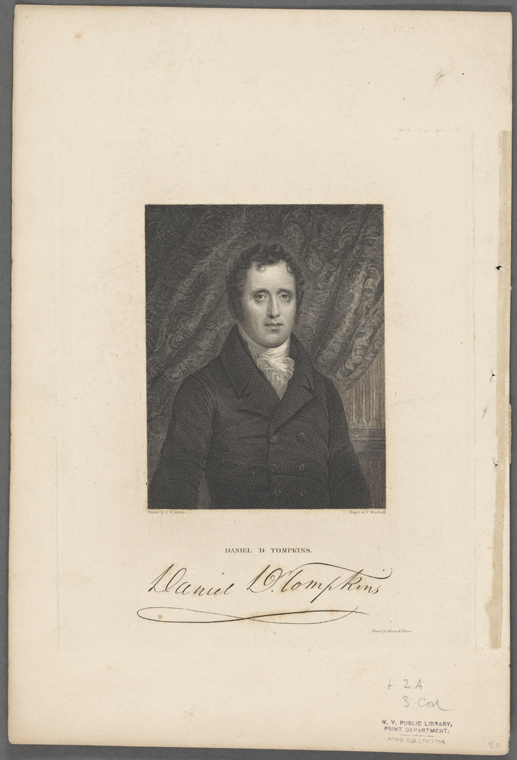Elizabeth De Hart Bleecker Diary, June 24, 1802
“A very fine day - being St. John’s Day it was celebrated by the ancient and honorable order of Free Masons - they form’d a Procession and walk’d through some of the streets to Trinity Church, where an Oration was deliver’d by Brother Washington Morton, and sacred music perform’d--I went to Mama’s to see the Procession - my Nurse and child went also.”- Elizabeth De Hart Bleecker, June 24, 1802
Masons famously kept their rituals secretive, but as Bleecker’s diary entry suggests, their celebrations were often public. Bleecker probably did not just happen upon the procession. The Masons placed notices in local newspapers with details about the celebration, including the route the parade would take to Trinity Church, so that interested New Yorkers could observe the festivities. Though one needed tickets to attend the service and oration at the church, it was also open to non-Masons; even women could attend.

The festivties continued later that evening, though it seems Bleecker had already gone home. Joseph Delacroix—who owned the Vauxhall Gardens, an outdoor theater—planned to hold a“Masonic Fire-Works” display on the evening of St. John's Day. He avertised in local newspapers to inform both "his Brother Masons and the public” of details about the show and how to acquire tickets.

The Masonic ranks teemed with well-connected and powerful men. Delacroix owned a prominent public venue in the City. Daniel Tompkins, who signed the notice about the procession on behalf of his fellow Masons, would go on to become the governor of New York and vice president. Later in life he also served as grand master—the ranking member—of New York’s Grand Lodge. Prominent politicians often filled that post. Chancellor Robert R. Livingston, the highest judicial officer in New York, was the grand master for over fifteen years. DeWitt Clinton was the state's grandmaster throughout much of the 1800s and 1810s, during which time he served as the mayor of New York City and lieutenant governor and governor of New York State.
These men saw Masonry as a means to serve the public good. The St. John's Day procession, for instance, celebrated Masonic brotherhood, but also had a charitable purpose. During the church service, the Masons took up a collection “for the relief of 'Poor Widows with small Children,' and of the Society ‘for the relief of Distressed Prisoners.’” Throughout the country, Masons frequently led efforts at communal improvement, especially building schools, which in this period tended not to be publicly funded.
By the early-nineteenth century, Masons were a familiar presence in public life in New York City and throughout the country. Bleecker's diary entry only scratches the surface of their influence, and merely hints at the important role that seemingly private associations played in the creation of early national civic culture.
This is one of a series of monthly posts highlighting entries from the Elizabeth De Hart Bleecker Diary. Previous installments include a broad overview description of the diary, a post about the election of 1800 and another about lotteries in early New York.
FURTHER READING
For more on the Masons in early America, check out Steven C. Bullock, Revolutionary Brotherhood: Freemasonry and the transformation of the American social order, 1730-1840 (Chapel Hill: University of North Carolina Press, 1996); and John L. Brooke, "Ancient Lodges and Self Created Societies: Voluntary Association and the Public Sphere in the Early Republic," in Ronald Hoffman and Peter J. Alberts, eds., Launching the Extended Republic: The Federalist Era (Charlottesville : Published for the United States Capital Historical Society by the University Press of Virginia, 1996).
About the Early American Manuscripts Project
With support from the The Polonsky Foundation, The New York Public Library is currently digitizing upwards of 50,000 pages of historic early American manuscript material. The Early American Manuscripts Project will allow students, researchers, and the general public to revisit major political events of the era from new perspectives and to explore currents of everyday social, cultural, and economic life in the colonial, revolutionary, and early national periods. The project will present on-line for the first time high quality facsimiles of key documents from America’s Founding, including the papers of George Washington, Thomas Jefferson, Alexander Hamilton and James Madison. Drawing on the full breadth of the Library’s manuscript collections, it will also make widely available less well-known manuscript sources, including business papers of Atlantic merchants, diaries of people ranging from elite New York women to Christian Indian preachers, and organizational records of voluntary associations and philanthropic organizations. Over the next two years, this trove of manuscript sources, previously available only at the Library, will be made freely available through nypl.org.
Read E-Books with SimplyE
 With your library card, it's easier than ever to choose from more than 300,000 e-books on SimplyE, The New York Public Library's free e-reader app. Gain access to digital resources for all ages, including e-books, audiobooks, databases, and more.
With your library card, it's easier than ever to choose from more than 300,000 e-books on SimplyE, The New York Public Library's free e-reader app. Gain access to digital resources for all ages, including e-books, audiobooks, databases, and more.
If you don’t have an NYPL library card, New York State residents can apply for a digital card online or through SimplyE (available on the App Store or Google Play).
Need more help? Read our guide to using SimplyE.

